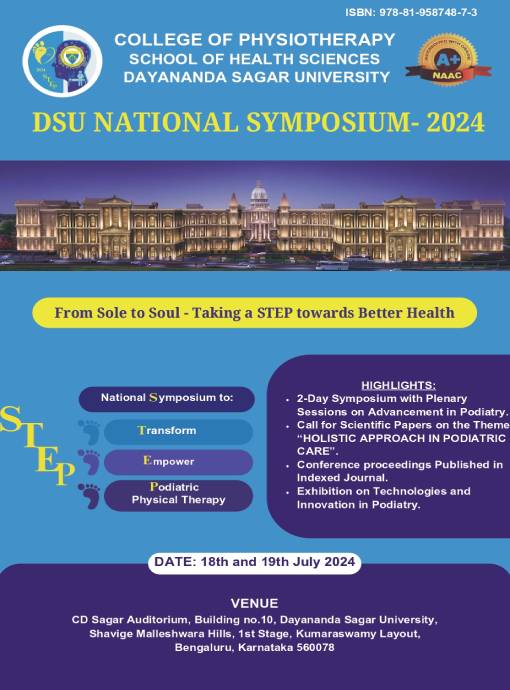Effectiveness of Myofascial Release with Kinesiotaping Versus Myofascia Release Alone in Improving Flexibility, Strength, and Sprint Performance among Recreational Football Players with Hamstring Tightness – Randomized Controlled Trial
DOI:
https://doi.org/10.18311/DSUPHY/9788195874873/2024/045Keywords:
Flexibility; Hamstring Tightness; Kinesiotaping; MFR; Recreational Football Players Strength; Sprint PerformanceAbstract
Background: Hamstring injuries in athletes are common, affecting performance and requiring costly rehabilitation. Myofascial release and kinesiotaping help relieve tightness and enhance muscle flexibility and function.
Aim: This study explores combining myofascial release (MFR) with kinesiotaping versus MFR alone, assessing impacts on hamstring flexibility, strength, and sprint performance in athletes.
Method: Thirty-six participants were randomly assigned to MFR with kinesiotaping or MFR alone for 6 weeks. Pre and post-tests measured AKE flexibility, strength via modified sphygmomanometer, and 20 m sprint performance.
Result: Statistical analysis indicated significant gains in AKE test scores, hamstring strength, and sprint times for both groups (p < 0.001). The experimental group excelled in AKE scores (p = 0.026) and hamstring strength (p = 0.002) compared to controls; sprint improvements were comparable (p = 0.704).
Conclusion: Combining MFR with kinesiotaping enhances hamstring flexibility and strength more effectively than MFR alone, based on significant improvements in AKE scores and strength.
 Irivichetty Sai Chandana
Irivichetty Sai Chandana
